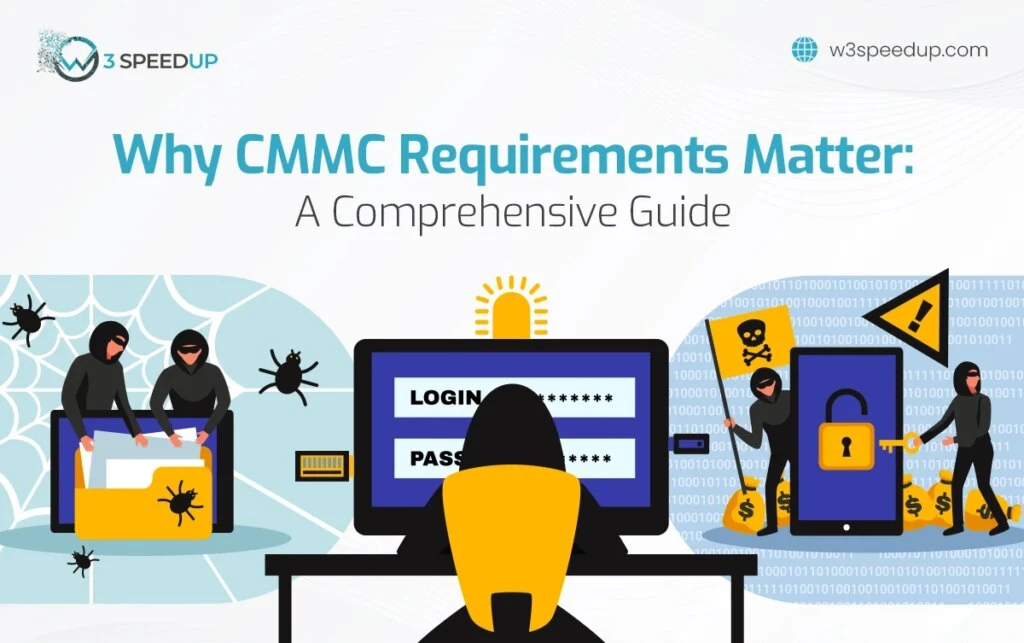Established by the US Department of Defense (DoD), the Cybersecurity Maturity Model Certification (CMMC) is a system that assesses the degree of cybersecurity maturity and ensures that procedures and policies are in line with the kind and amount of sensitivity of the data that has to be sealed.
Contractors working with the Defense Industrial Base (DIB) must ensure that their systems and networks adequately protect unclassified information, such as Federal Contract Information (FCI) and Controlled Unclassified Information (CUI). The CMMC framework assesses the implementation of standards and procedures needed to reach a cybersecurity maturity level.
CMMC Tiers
Department of Defense’s five CMMC tiers and the procedures and policies that go along with them:
 1. CMMC First Level
1. CMMC First Level
To reach Level 1, a company must adhere to the given procedures. Level 1 process maturity is not evaluated since organizations can only execute these processes as needed and may not have access to documentation.
Practices at Level 1 must adhere to the minimum standards laid out in 48 CFR 52.204-21, “Basic Safeguarding of Covered Contractor Information Systems,” to ensure the security of FCI.
 2. CMMC Level 2
2. CMMC Level 2
To reach Level 2, organizations must create and record rules and procedures to govern the execution of their CMMC compliance. Documenting procedures allows people to carry out procedures with greater consistency. Mature capabilities are achieved when processes are documented and subsequently practiced as documented.
The second level is an intermediate step between the first and third levels, and it incorporates practices from other standards and references with a subset of the security requirements outlined in NIST 800-171. A portion of the procedures alludes to CUI protection since this level is a transitional one.
 3. CMMC Level 3
3. CMMC Level 3
At Level 3, organizations are expected to create, update, and allocate resources towards a plan that showcases their ability to manage activities related to practice implementation. Missions, objectives, project plans, resources, necessary training, and stakeholders’ roles and responsibilities could all be part of the plan.
All of the security criteria outlined in NIST SP 800-171, together with other practices from other standards and references to reduce vulnerabilities, are part of Level 3’s focus on protecting CUI.
Be aware that, in addition to the security obligations outlined in NIST SP 800-171, such as incident reporting, DFARS clause 252.204-7012 (‘Safeguarding of Covered Defense Information and Cyber Incident Reporting”) imposes additional mandates.
 5. CMMC Level 5
5. CMMC Level 5
Organizations must optimize and standardize the execution of processes across the board to reach Level 5.
The main objective of Level 5 is to keep CUI safe from APTs. The supplementary practices enhance the breadth and depth of cybersecurity skills.
The Significance of CMMC Compliance
It is crucial to be compliant with CMMC regulations. There is a growing possibility of substantial harm due to the proliferation and sophistication of cyber threats. The importance of CMMC compliance is highlighted by the following reasons:
 1. Ensuring the Safety of the Nation
1. Ensuring the Safety of the Nation
The principal goal of the CMMC is to ensure the security of vital national security information. Because of the volume of CUI and FCI it handles, a breach in the defense supply chain might have far-reaching consequences for the country’s defense. To protect vital information from enemies and bad actors, the DoD is ensuring that contractors use strong cybersecurity safeguards.
 2. Preventing Cyber Attacks
2. Preventing Cyber Attacks
Cybercriminals are always looking for new ways to compromise systems, and companies in the defense supply chain are easy prey. By mandating that contractors establish and uphold robust cybersecurity procedures, CMMC compliance aids in mitigating these risks.
 3. Maintaining Uniformity and Regularity
3. Maintaining Uniformity and Regularity
Before the CMMC, the defense supply chain’s cybersecurity standards were not uniform. Some contractors had strong safeguards in place, and others did not. To guarantee that all contractors fulfill the same rigorous standards, the CMMC establishes a uniform approach to cybersecurity.
 4. Building Confidence and Fostering Teamwork
4. Building Confidence and Fostering Teamwork
Cooperation and trust between the Department of Defense and its contractors are both improved by CMMC compliance. Contractors gain credibility and trust when they show they are serious about cybersecurity and can protect sensitive data. Collaborative success and the timely completion of defense contracts depend on this level of confidence.
 5. Affect on the Economy
5. Affect on the Economy
There can be serious financial consequences for contractors who do not follow CMMC regulations. Contractors risk losing out on commercial possibilities like Department of Defense contracts if they don’t get the required certifications. On the flip side, contractors get an advantage in the defense market and access to new prospects when they become CMMC compliant.
 6. Adherence to Laws and Regulations
6. Adherence to Laws and Regulations
In addition to the specific needs of the CMMC, contractors must follow numerous cybersecurity-related laws and regulations to be considered compliant. This encompasses adhering to preexisting rules like NIST SP 800-171 and the Defense Federal Acquisition Regulation Supplement (DFARS). To avoid fines and penalties, contractors should comply with CMMC standards to align with broader legal and regulatory expectations.
In the end!
The Department of Defense may exchange sensitive and regulated unclassified information with its contractors and subcontractors, and this program has been created to protect this information. CMMC supplies its partners with several rules and regulations to maintain CMMC compliance and appropriate security standards.
Failure to secure sensitive information aids our nation’s enemies. It increases the danger to the brave men and women who risk their lives to protect our freedom, so your firm must have a robust cybersecurity program.
 Christmas Mega Sale – Enjoy Up to 50% OFF on Every Plan!
Christmas Mega Sale – Enjoy Up to 50% OFF on Every Plan! 


